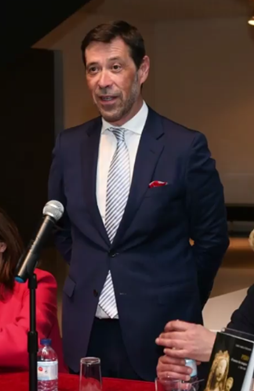
The Calouste Gulbenkian Museum houses one of the world's most important private art collections. It includes works from Ancient Egypt to the early 20th century, spanning the arts of the Islamic World, China and Japan, as well as the French decorative arts, the jewellery of René Lalique and some of the most important painters of all times works such as Rembrandt, Monet, Rubens, Manet, Renoir, Degas and Turner.

Josefa de Óbidos was a Spanish-born Portuguese painter. Her birth name was Josefa de Ayala Figueira, but she signed her work as "Josefa em Óbidos" or "Josefa de Ayalla". All of her work was executed in Portugal, her father's native country, where she lived from the age of four. Approximately 150 works of art have been attributed to Josefa de Óbidos, making her one of the most prolific Baroque artists in Portugal.

The Parque das Nações, colloquially known as Expo, is a freguesia and typical quarter of Lisbon, the capital city of Portugal. Located in eastern Lisbon, Parque das Nações is to the east of Olivais, northeast of Marvila, and directly south of Lisbon's border with Loures. The population in 2021 was 22,382.

Carnide is a freguesia and typical quarter of Lisbon, the capital city of Portugal. Located in northern Lisbon, Carnide is north of São Domingos de Benfica and Benfica, east of Lumiar, and directly south of Lisbon's border with Odivelas. The population in 2021 was 18,028.

Marvila is a freguesia and typical quarter of Lisbon, the capital city of Portugal. Located in eastern Lisbon, Marvila is to the southwest of Parque das Nações north of Beato, and east of Alvalade. The population in 2021 was 35,479.

Penha de França is a freguesia and typical quarter of Lisbon, the capital city of Portugal. Located in the historic center of Lisbon, Penha de França is north of São Vicente, east of Arroios, south of Areeiro, and west of Beato. The population in 2021 was 28,475.
Portuguese contemporary art is all the art produced in Portugal after the Carnation Revolution; however, even before then, there were already some artists that could be characterized as contemporary.
António Palolo was a Portuguese artist and painter.

Maria Keil was a Portuguese visual artist. She was born in Silves and died in Lisbon.
Sofia Areal is a Portuguese abstract painter, whose works adhere mostly to organic non-geometrical forms and a strong chromatic focus. Besides painting and drawing, Areal's work involves collage, textile design, and scenography.
Ana Vieira was a Portuguese artist.
Alberto Carneiro was a Portuguese artist.

Francisco Tropa is a Portuguese sculptor and visual artist. He lives and works in Lisbon.
Irene do Céu Vieira Lisboa was a Portuguese novelist, short story writer, poet, essayist and educational writer. Especially for her fictional work, she has achieved a special place in modern Portuguese literature.

Ana Hatherly was a Portuguese academic, poet, visual artist, essayist, filmmaker, painter, and writer. She was considered one of the pioneers of the experimental poetry and experimental literature movement in Portugal.

Lisbon is one of the most popular city destinations in Europe. The city of Lisbon and the Lisbon metropolitan area attracts a significant number of tourists each year, drawn to its historical and cultural heritage, good transportation connections and good touristic infrastructure.
Rosa Carvalho is a Portuguese artist.

Ângela Ferreira is a Portuguese and South African installation artist, video artist, photographer and sculptor. She spends time in both countries.

António Manuel Filipe Rocha Pimentel is a Portuguese academic and art historian currently the director of the Calouste Gulbenkian Museum in Lisbon, Portugal.












